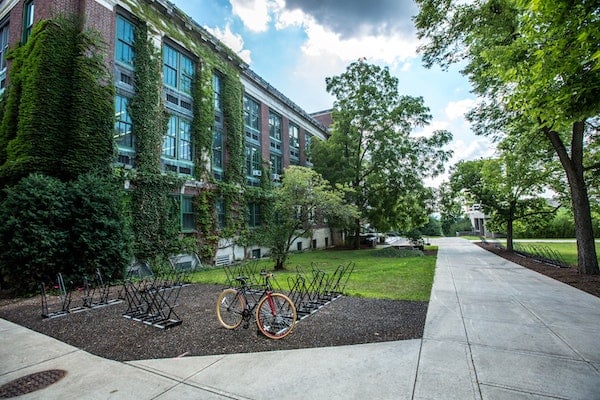Published on
Meeting Evolving Student Engagement Needs with Student Affairs

Students evolve; they will continue to evolve. Research confirms students’ out-of-classroom experiences contribute to retention, graduation, and satisfaction with their alma mater. Student Affairs divisions creatively provide internships, leadership development, soft skills/social skillsets augmentation, community service and service-learning, teamwork, fraternity and sorority networks, and intercultural understanding. And, yes, we usually orchestrate the concerts, intramural sports, Homecoming Weeks, and senior class parties. But it’s “not your parents’ college anymore;” tuition and fees require that Student Affairs educators emphasize learning as well as living.
Studies note that college students need – more than want—the myriad of programs and services generated from Student Affairs. Campus Counseling Centers and Health Centers report record percentages of students seeking their professionals. For many first-generation students, university licensed and certified physicians, nurses, and psychotherapists are the first health care providers they’ve known. Intercultural Affairs offices ensure that minority communities become visible and embraced by the whole: African-American, Asian-American, Latina/Latino/LatinX/Hispanic, LGBTQ+, international students and scholars, and our disabled students. Contemporary career education administrators prepare mock interviews, dress-for-success seminars, and sample resumes. Recreation centers supplement their traditional treadmill training with nutrition classes, fitness taught in a different language, or personal training. Each student selects her, his, or their experiences like they choose items in a cafeteria—no two selections are necessarily the same and every student grows into mature adulthood at a different pace.
In this regard, Student Affairs is essential to the entire higher education enterprise.
The Challenges
In the national student affairs associations, the themes include: shrinking budgets, increased numbers of students with severe psychological disorders, unfunded mandates from state and federal governments, political divisions, incivility in discourse, student financial distress, and COVID. The workloads are made unattractive by lower salaries and benefits. On numerous campuses, student affairs educators perceive their work as expendable and tertiary to faculty and senior administrators. It is no surprise that a larger number of professionals leave Student Affairs rather than commit to a lengthy career in the field.
Active Engagement
Institutions cannot increase enrollment without a deliberate partnership involving Enrollment Management and Student Affairs. The retention of admitted students begins before new students arrive on campus. Admissions recruit students, then transition them carefully into Student Affairs led New Student Orientation periods. During orientation—a formal period of icebreakers, social events, training periods, campus tours, and class registrations—new students become more comfortable with the setting, with peers, with faculty and staff, and with campus traditions. In 2021, these initial periods are as crucial as ever; the current national cohort of students is the loneliest, most anxious, and most depressed of any set of teenagers to attend college. Student Affairs is aware and focused upon their health and satisfaction.
There are so many benefits. Within the current context of COVID and opioid deaths, Student Affairs administrators are seasoned experts in emergency response, incident/riot protocols, First Amendment rights and policies, and mediation. If no other university division is prepared for the burgeoning diversity on all campuses, then Student Affairs delivers; our offices are safe harbors for private discussions, for planning, and for generating varying responses to life’s situations.
Solutions?
Since Student Affairs can be a storing silo for student data, the division must present verifiable statistics to university officers. The data will confirm the case for increasing allocated resources to Student Affairs. The current anecdotal perception is that a university will reduce the Student Affairs mission before it reduces the number of employees, programs, or services in other divisions. In some notable instances, activist student affairs educators supplied data to generate larger numbers of psychotherapists for counseling; more resources for career preparation and readiness centers; enhanced on-campus housing facilities; or better health services outreach initiatives.
A widely underused partnership is the segment of faculty supportive of student affairs and its numerous functions. An examination of the distinct differences of faculty and staff annual performance evaluations must occur to bring the two groups together. When Student Affairs leaders realize that faculty are rewarded for grant-writing, research, and publications as well as teaching, then student affairs personnel can loan themselves to co-authoring the grants, guest lecturing in classes, and drafting the published manuscripts.
Lastly, current higher education leaders recognize that federal and state governments are reducing their appropriations to universities at the same time that governments mandate additional work. Our employees must influence legislators to comprehend the harmful impact of unfunded mandates. Or, it is paramount that endowments are approved for individual departments or programs, thus protecting a steady revenue stream for treasured student affairs initiatives.
Students evolve. Student Affairs divisions will evolve with them, ready for the call to teach, to advise, and to advocate for our student communities…while we remind American higher education of the inimitable and invaluable contributions outside the classroom.
Disclaimer: Embedded links in articles don’t represent author endorsement, but aim to provide readers with additional context and service.
Author Perspective: Administrator



